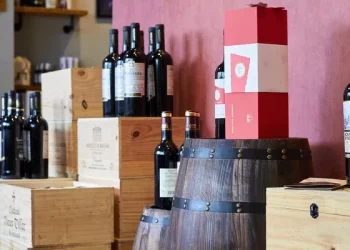Believe that many careful wine lovers can find that the bottom of many wine bottles will have a deep or shallow groove, just like the “dimple” of wine.
In fact, the groove has an official name — arch crown.
There are various opinions on the significance of arch walling on wine bottles, especially on the relationship between arch walling and the quality of wine served, but it is certain that the two are not necessarily related.
If anything, bottles with a deeper arch walling bottom are more expensive to make as they require more glass and are more difficult to make, and some bottles with a higher arch walling bottom are used to hold high quality wines.
In addition, there are some more popular, more accepted, let’s take a look.
1. In the beginning, glass bottles were manually blown, so the bottom of the bottle could not be completely flat and smooth. Craftsmen made the bottom of the bottle into a concave shape, so as to avoid the sharp bump at the bottom damaging the table and improve the stability of the wine bottle when placed.
Today, as machine-made bottles become more sophisticated and smooth bottoms are not a problem, the groove has lost its original functional significance but is still preserved as a tradition.
2. Improve the structural stability and compressive resistance of wine bottles to a certain extent, crown bottom can improve the structural stability of wine bottles and strengthen the bottle body.
Especially for sparkling wines, since they usually contain a certain amount of air pressure, crown bottom helps to distribute the pressure of carbon dioxide to the wine bottle more evenly, enhancing the stability and pressure resistance of the wine bottle.
This property of crown bottom also helps reduce the chance of breakage during long haul transport.












































